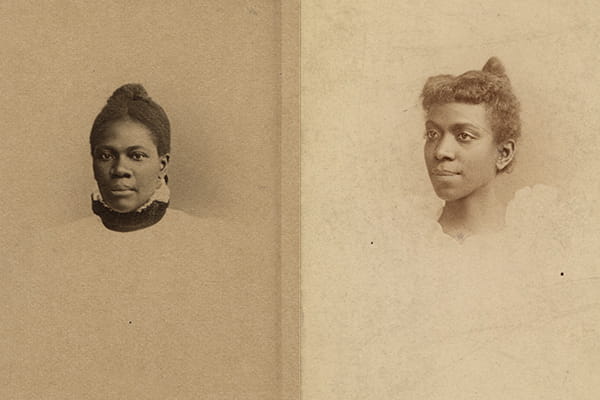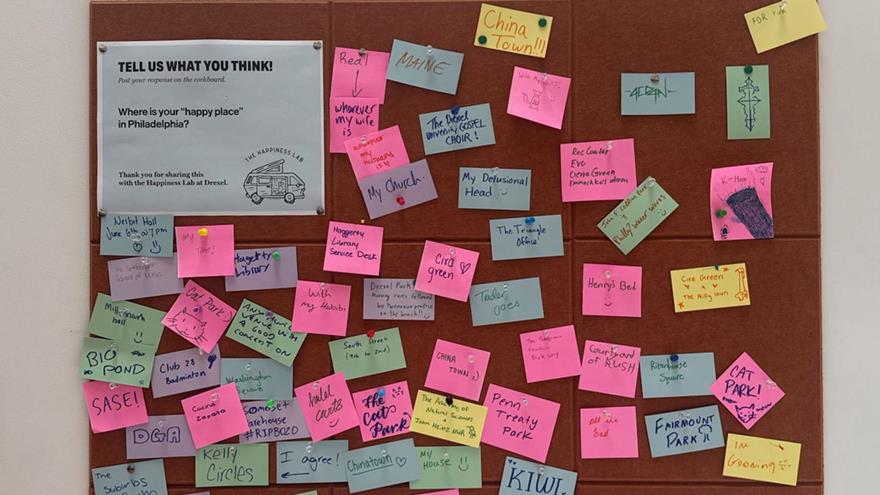Black History Month at Drexel: From Pioneers Yesterday to Diversity, Inclusiveness Today

Black History Month is a time to remember African-American pioneers, and Drexel has no shortage of such figures in its past.
The Woman’s Medical College of Pennsylvania, a predecessor to the Drexel College of Medicine, granted medical degrees to several of the first handful of African-American women to become doctors, including the second ever to receive an MD degree in the United States. And the first known African-American graduate of the Drexel Institute of Art, Science and Industry was an early leader among African-American architects.
That legacy of inclusion carries through to today, when individuals and groups throughout the University continue to work to make it a more diverse and welcoming place.
PIONEERS
At the Drexel College of Medicine’s Legacy Center, the staff is encouraging young people to examine diversity and inclusion by providing a window into the past. The Legacy Center, which maintains the archives and collections of the College of Medicine and the institutions that preceded it, is creating an educational website for high school students that will tell the stories of two black women who earned degrees from the Woman’s Medical College in 1897.
“These were probably within the first couple dozen African-American women to get medical degrees,” said Matt Herbison, an archivist at the Legacy Center.
While developing the website — funded with the help of a $200,000 grant from the Pew Center for Arts and Heritage — Herbison and others from the Legacy Center have visited high schools around Philadelphia to present the women’s stories using primary-source documents, which bring history alive for students in a way that textbooks can’t.
Examining letters, records and photos, the students compare and contrast the two women, each of whom represents a slice of African-American history and raises questions about the nature of success in America. Eliza Grier was born into slavery, was in her 30s by the time she attended medical school and struggled with poverty and health problems, dying not long after she graduated. Matilda Evans, meanwhile, was born after slavery ended, earned her degree during her 20s and found success and good health after opening a practice in Columbia, S.C.
The educational experience was not always easy for the two women — an excerpt from a classmate’s autobiography said that at least one white member of their class did not wish to march alongside Grier and Evans on the graduation stage. But, Herbison said, the college did appear to have a strictly merit-based admissions system, accepting women no matter their race, ethnicity or nationality.
That policy apparently extended back to the 1860s. In 1867, Rebecca J. Cole graduated from the Medical College, becoming just the second African-American woman to receive a medical degree in the United States. Few records remain from her life, but it is known that she went on to practice medicine for 50 years.
Drexel’s first African-American alumnus, William Sidney Pittman, graduated in 1900. He became an accomplished architect, according to later media reports.
PROGRESS CONTINUES
As associate vice president for equality and diversity, Michele Rovinsky-Mayer oversees some of modern Drexel’s efforts to become more diverse and welcoming. But she said it’s important to note that it’s a job much bigger than any one person or department.
“It’s owned by all of us,” Rovinsky-Mayer said. “We’re all part of this community. Our community can only be as welcoming and inclusive as its members.”
In addition to ensuring that Drexel adheres to its Equality and Non-Discrimination Policy, Rovinsky-Mayer’s office has worked with numerous offices and groups around Drexel to produce a guide called “WIRED for Success,” which offers basic information about being welcoming toward all members of Drexel's diverse and global community.
And when conflicts arise that are related to differences among members of that community, Rovinsky-Mayer and her colleagues offer conflict resolution services that can serve as “teachable moments” for all involved. That’s an important dynamic involved in diversity and inclusion, she said.
“It is part of the learning experience,” Rovinsky-Mayer said. “We’re welcoming students from all over the world, so conflict is inherent in that kind of diversity.”
Diversity and inclusiveness efforts at Drexel are too numerous to list here, but another example is the BRIDGE (Building Relationships in Diverse Group Experiences) program in LeBow College of Business. Brian Ellis, LeBow’s assistant dean of undergraduate programs, founded the program after a call by Senior Vice Provost John DiNardo for more support for students from underrepresented groups.
Ellis and others talked with students from those groups and found that many of them felt somewhat isolated, perhaps simply because they didn’t encounter many people who looked like them. So they set up the BRIDGE program, welcoming African-American, Latino, Native American or Alaskan Indian students as freshmen and providing them with “intrusive” advising, mentoring and group activities such as quarterly “Sunday dinners” to help them feel connected and welcome.
“Hopefully this can be a model for the University,” Ellis said.
The first class of BRIDGE scholars, now sophomores, outperformed their peers during their freshman year, earning a 3.08 GPA on average. Deanna Ellis (no relation to Brian) is a freshman, part of the second BRIDGE group. She said BRIDGE made her feel welcomed and comfortable while making the transition from high school.
“It was like a family outside of home,” she said.
Drexel’s desire to be more diverse and inclusive is apparent, Brian Ellis said, and one example is that the BRIDGE program’s advisory board was recognized with a 2013 Drexel President’s Award. But there’s always room to improve.
“That was just like icing on the cake,” Ellis said of the award, “but we still have a lot of work to do.”
In This Article
Drexel News is produced by
University Marketing and Communications.

